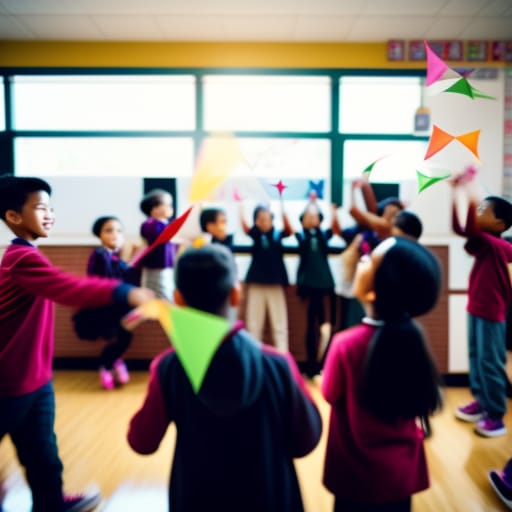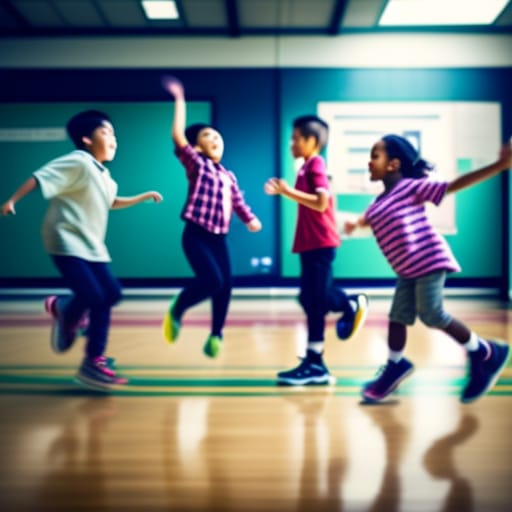Science kits can be an incredibly fun and engaging way to introduce young 1st grade students to important science, technology, engineering, and math (STEM) concepts. With so many science kit options out there, how do you choose the right one for your first grader? In this comprehensive guide, we’ll walk you through everything you need to know to pick the best science kits to inspire and educate your budding young scientist.

An Introduction to Science Kits for 1st Graders
Science kits are hands-on learning tools that allow children to carry out experiments, observe processes, build models, and discover how the world works through interactive play. When selected properly, science kits can help reinforce science lessons from school in a way that is enjoyable and sticks with kids.
For first graders aged 5-7, look for kits that focus on fundamental science concepts like:
- Basic chemistry – mixing substances, reactions
- Simple physics – gravity, motion, magnetism
- Life science – growing plants, habitats
- Earth science – rocks, fossils, weather
- Engineering/technology – building structures, simple machines
Good science kits encourage open-ended play rather than rigid step-by-step instruction. They also utilize common household items along with kit materials so parent involvement is required. This interactive learning helps first graders not only understand core scientific principles but also develop their critical thinking abilities.
When shopping for the best science kits, keep in mind first graders developing reading comprehension skills. Look for kits with clear pictorial instructions or those designed specifically for early elementary ages. Supervision from parents can allow kids to enjoy advanced kits. We’ll highlight the key features to look for in age-appropriate science kits for first grade students in this guide.
Benefits of Science Kits for First Graders
Introducing children to science kits when they are just starting elementary school can provide many benefits that set them up for future STEM success:
1. Builds interest in science topics
By participating in fun science activities at a young age, children are more likely to develop a passion for science that can last a lifetime. Science kits for first graders introduce key concepts like chemistry, physics, and engineering that pave the way for more advanced study in later grades.
2. Develop critical thinking abilities
Following instructions, testing predictions, observing results, and analyzing data are all scientific skills kids can practice when playing with science kits. This builds critical thinking that is valuable across all school subjects.
3. Fosters creativity & problem-solving
Open-ended kits encourage kids to experiment and use creativity to solve problems. This exploratory style of play provides an engaging way to learn.
4. Teaches responsibility
Kids must carefully follow kit directions, which teaches focus and self-discipline. They also often need to share kit materials with siblings, building teamwork.
5. Leads to meaningful parent-child bonding
As parents engage with their kids during science experiments, they spend quality time together exploring new concepts. This hands-on learning creates fun family memories.
6. Reinforces classroom lessons
Science kits that complement what first graders are learning in school help strengthen their grasp of core concepts through repetition.
7. Promotes early STEM learning
Positive early experiences with science, technology, engineering and math can spark kids’ interest in these crucial 21st century fields.
LSI Keywords: Improving science kit content with latent semantic indexing
One technique that can help improve the search visibility and ranking of science kit content is latent semantic indexing (LSI). LSI looks at the overall semantic meaning and context of content to connect related keywords and concepts.
For example, related LSI keyword terms for “science kits for 1st graders” might include:
- hands-on science activities
- STEM learning
- science experiments for kids
- science education
- science projects
Using these semantically related LSI keywords throughout science kit content helps search engines better understand the topic and theme. This improves relevance for users searching for information on science kits for 1st graders.
Key Factors to Consider When Choosing a Science Kit
All science kits are not created equal. With so many options out there, how do you narrow it down to find the perfect science kit to engage your first grade student? Here are the key factors to consider:
Age-appropriateness
- Look for kits marked for ages 5-7 specifically.
- Ensure reading level and manual instructions are appropriate for first graders.
- Avoid kits with small pieces that pose a choking hazard for younger kids.
Types of experiments
- Look for a variety of experiment types like chemistry, physics, and geology.
- Kits with 15-30 different mini-experiments hold attention best.
- Is there a good mix of activities that encourage coding, creativity, problem-solving and other skills?
Educational Value
- Does the kit teach science basics like the scientific method, cause and effect?
- Are lessons aligned with national STEM education standards?
- Are knowledge cards, activity books, or an online learning portal included?
Parental involvement
- Kits designed for adult supervision allow appropriate learning for first graders.
- Instructions should clearly explain parent’s role.
- Additional science explanation for parents expands learning.
| Factor | Considerations |
|---|---|
| Age-appropriateness | Designed for ages 5-7, reading level, safety |
| Types of experiments | Variety – chemistry, physics, geology with 15-30 mini experiments |
| Educational value | Teaches scientific method, aligned to STEM standards |
| Parental involvement | Requires adult supervision, explains parent role |
Durability & replenishability
- Materials should be durable enough to withstand repeated use.
- Are extra experiment refills available for purchase?
Storage
- Materials should be packed neatly into a compact storage box or case.
- Sturdy containers keep all the pieces organized between sessions.
Budget
- Prices range widely from $25 to $80+. Determine how much you want to spend.
- Compare value across kits in the same price range.

Top Science Kit Recommendations for 1st Graders
Now that you know what to look for in a first grade science kit, check out some of these top-rated options across a range of budgets.
Science4You Junior Science Lab | $34.99
This kit focused on chemistry introduces first graders to science basics like tube connectors, dropper bottles, and lab tools. kids can combine the lab materials to create reactions like color-changing potions. A perfect STEM starter set!
Hands-on experiments: 25+
Key learning: Lab procedures, chemical reactions
Age range: Designed for ages 5+
Game School Meteorology Kit | $49.99
Budding meteorologists will love learning about weather science hands-on with this kit. It includes tools like a wind vane, rain gauge, thermometer, and compass. Easy experiments track weather data over time.
Hands-on experiments: 15 weather-related
Key learning: Meteorology, earth science
Age range: Best for ages 7-9 with parental help
Tech Will Save Us Creative Coding Kit | $59.99
This kit with an Arduino-based computer board introduces kids to coding concepts by letting them program light sequences, sounds, animations, and more. A perfect STEM kit to start teaching early computer science skills.
Hands-on experiments: 10 coding projects
Key learning: Coding, programming, electronics
Age range: Ages 4-7 with parental assistance
Green Science Eco Explorer Kit | $39.99
With a focus on environmental science, this kit lets kids do cool experiments like building a greenhouse to see condensation in action. They’ll learn about climate, recycling, solar energy, and more STEM topics.
Hands-on experiments: 18 eco-science activities
Key learning: Environmental sustainability
Age range: Best for ages 5-7
Scientific Explorer My First Mind Blowing Science Kit | $19.99
This entry-level kit is perfect for introducing young first graders to science concepts like color mixing, bubbles, optical illusions, and more. The 20 cool experiments are sure to spark an interest in STEM topics.
Hands-on experiments: 20
Key learning: Science basics
Age range: Ages 5+
“The open-ended experiments in our 1st grade science kit inspired creativity in my daughter. She came up with her own wild concoctions and hypotheses beyond just the instructions.” – Sarah D., parent
No matter which one you choose, the best science kits will open up a whole new world of exploration and learning for your first grade student!
Setting Up a Home Science Area for Your First Grader’s Kit
To really help your child get the most from their science kit, set aside a permanent science spot at home. Make it a fun space your kid will be eager to spend time in and carry out their hands-on science activities.
Designate a science station
Pick an out-of-the-way spot like a corner of the playroom or bedroom. Set up a small table or clear off a counter space. Add a washable mat or tablecloth.
Proper storage bins
Use clear plastic storage bins, tackle boxes, or small shelving to neatly organize all the science kit materials. Proper storage keeps all the pieces together.
Reference materials
Place science books, a notebook, pencils, safety goggles, and any other kit accessories in the science spot for easy access during experiments.
Accessible yet secure
Keep young kids’ science areas up high or in a closet when not in use. Only bring out materials with close parental supervision to avoid messes or misuse.
Avoid carpet and clutter
Set up the science station away from carpeting and clutter to allow for easy clean-up of spills. Tile, wood or linoleum flooring is ideal.
Safety first
Ensure good ventilation and read science kit safety guidelines. Have a fire extinguisher and first aid kit handy just in case. Teach proper safety.
Let them personalize it
Encourage kids to decorate their new science space with posters or their own drawings. Allow them to add tools like magnifying glasses to foster curiosity and ownership.
By setting up a designated science zone at home, you provide your first grader with their very own mini-lab that will make science kits even more engaging and educational.
Fun & Easy Science Experiments to Try with First Graders
Beyond specific science kits, there are tons of simple, hands-on science experiments you can do with your first grader using common household items. Try out these fun ideas:
Make oobleck
Mix cornstarch and water to demonstrate how solutions can act as both liquids and solids. Kids love the goopy textures of this non-Newtonian fluid.
Launch film canister rockets
Use fizzing antacid tablets and water in an empty film canister to create an eruption that shows how pressure builds.
Create a lava lamp
By adding oil, water, and food coloring, kids can see density in action and make a colorful lamp.
Grow salt crystals
Dissolve salt in water and let it slowly evaporate to form beautiful crystalline structures that demonstrate chemistry.
Make a summer snow globe
Fill a jar with coconut oil and sprinkle in glitter to create a snow globe effect that shows viscosity and suspended mixtures.
Build paper airplanes
Foster engineering skills by folding paper airplanes and tweaking designs to see how shape affects flight distance.
These simple, screen-free science activities help engage first graders in discovery and learning without needing expensive kits. Keep a box of household science materials on hand to whip up impromptu experiments anytime.
Getting the Most Out of Your First Grade Science Kit Experience
Science kits offer open-ended play opportunities to discover STEM concepts, but parents play an important role in maximizing the learning experience. Follow these tips:
- Read the instructions carefully and carry out experiments in an organized manner. But don’t be afraid to extend activities.
- Ask your child open-ended questions about their observations to expand critical thinking.
- Tie experiments back to lessons your first grader is learning in science class at school.
- Let your child teach you. Having them explain concepts cements the learning.
- Click photos and videos of your child using their kit for memorable keepsakes.
- Have your first grader keep a simple science journal documenting experiments and results.
- When they master a kit, encourage more self-directed exploration and problem solving.
- Help them research real-world examples building on kit experiments like how rockets actually work.
With your guidance and involvement, science kits become an invaluable way to supplement STEM learning for first graders in an enjoyable way they will remember. The hands-on experiments, guidance and quality time with you equip them with knowledge and confidence.
Fostering an Ongoing Love of Science in Your First Grader
The natural curiosity and eagerness to learn of first graders provide the perfect foundation for launching a lifelong interest in science. A science kit gets them started, but there are plenty of other ways to keep your child engaged:
- Visit science museums and events like kids’ science festivals regularly to spark ongoing fascination.
- Do science activities together as a family like nature walks, planting a garden, or stargazing.
- Read books and magazines about science topics like dinosaurs or space to build knowledge.
- Watch age-appropriate science documentaries on TV together. Discuss concepts afterward.
- Cook and bake together and talk about the scientific processes involved.
- Point out science principles at work all around you – in their toys, in nature, even at the grocery store!
- Conduct additional DIY experiments at home with your first grader beyond their kit.
By cultivating your child’s innate sense of wonder and providing plenty of resources, their interest in science started by that first kit can continue to grow for a lifetime.

The Final Word on Choosing the Best Science Kits for First Grade
At the first grade level, science kits open up a world of hands-on learning, discovery and fun family bonding. Age-appropriate kits designed specifically for 5-7 year olds provide interactive introductions to key STEM concepts they’ll build on for years to come.
Look for kits that cover a diverse range of experiments while also reinforcing the scientific method. Durability, organized storage solutions, and parent supervision and involvement are must-have features when selecting kits for first graders.
Set your child up for success by designating a home science space and taking an active role in their educational play. Beyond the kits, keep exposing your first graders to science all around them. A solid foundation ensures their curiosity about how the world works only continues to grow.
Frequently Asked Questions
What are the benefits of science kits for 1st graders?
Science kits provide many benefits for first graders including building an early interest in STEM topics, developing critical thinking abilities, and reinforcing classroom lessons through hands-on experiments and activities. They also foster creativity, problem-solving skills, responsibility, and parent-child bonding.
What types of experiments should a science kit for 1st graders include?
Look for kits with a variety of 15-30 mini-experiments covering basic topics like chemistry, physics, engineering, life science, earth science, and technology. The best kits mix different activity types like building structures, modeling science processes, analyzing data, observing changes, and recording results.
What are important features to look for in a 1st grade science kit?
Key features include age-appropriate design for ages 5-7, short illustrated instructions, durable components, organized storage, household items and kit materials combined, and parental supervision required. Also, look for kits that reinforce the scientific method.
How can I maximize the educational value of science kits for my 1st grader?
Read all instructions carefully, ask probing open-ended questions during experiments, tie activities back to classroom lessons, let your child explain concepts to you, take photos and videos, have kids keep a science journal, and research real-world examples that build on the hands-on learning.
What are easy, affordable science activities to do with 1st graders at home?
Fun experiments you can try with common household items include making oobleck (cornstarch + water), creating film canister rockets, building paper airplanes, growing salt crystals, making lava lamps, and whipping up summer snow globes using coconut oil and glitter.